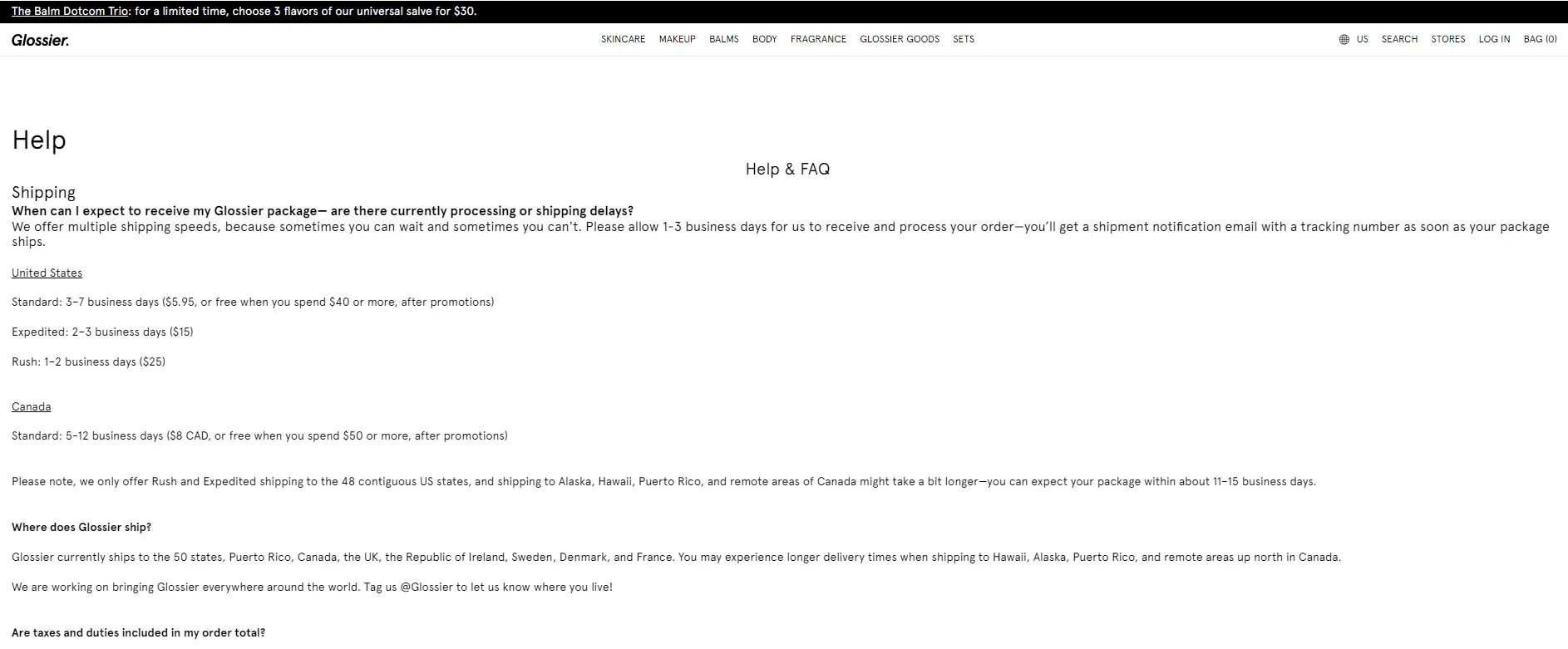The purpose of e-commerce content marketing is to connect potential customers who are doing research online with your brand. Today we’re talking all about the content types and tips for building a successful e-commerce content marketing strategy. Read on to find out more.
What is E-commerce Content Marketing
E-commerce content marketing is about creating and sharing valuable information to attract and engage people who might want to buy from your online store. It’s not just about selling products; it’s about giving your customers useful content that helps them solve problems or learn something new related to what you sell. This could be through blog posts, videos, infographics, or even helpful guides and tutorials.
The goal here is to build trust and a relationship with your audience. When people find your content helpful, they're more likely to remember your brand and come to you when they’re ready to buy. Plus, good content can help your website show up higher in search engine results so that new customers can find you more easily.
E-commerce content marketing is a smart strategy because it adds value to your customer's experience with your brand. Instead of pushing ads at them, you're offering helpful information. Over time, this approach not only helps increase sales but also builds a loyal community around your brand.
Let’s have a look at what content actually converts in ecommerce.
Types of Content for E-commerce Content Marketing
For e-commerce, several key types of content lay the foundation for attracting customers and boosting sales:
Product Descriptions
Detailed and engaging descriptions highlight the benefits and features of your products. Good descriptions help customers make informed decisions and show that you're talking about your products/services without hiding any info. Moreover, such descriptions improve customer experience as they have access to all the necessary information in the fastest way possible.
For example, Sephora provides detailed product descriptions highlighting the most important ingredients at the top.

Blog Posts
Informative articles related to your products or industry. These can provide valuable insights, tips, and solutions to your audience and drive traffic to your site. And don’t forget about SEO optimization. Blog posts with relevant content and keywords can improve your chances of ranking higher in Google. It means that more people will see your website. The more traffic - the more potential customers.
The manufacturer of sleep masks Manta Sleep covers different topics related to sleep on its blog. As you can see, they’re even talking about sleep patterns in pets and animals. In such a way, a brand becomes an educator rather than a seller and customers build a stronger connection with such a brand.

Customer Reviews and Testimonials
Honest feedback from your customers about their experiences with your products is a must for content marketing efforts. Reviews on ecommerce sites build trust and credibility around a brand.
Videos
Tutorials, how-tos, or behind-the-scenes looks engage customers visually. Videos can help explain complex products or show them in action. What’s even more important - videos are now easily sharable in both long and short forms almost on every social media platform. That is, you can repurpose the same video and use is across different platforms. Explore the importance of e-commerce content marketing in 2024, while considering the impact of personalized phone cases on consumer engagement and brand identity.
Guides
Comprehensive guides or instructions related to your products or services. These can come both as texts and videos and help customers use your products effectively and solve common problems.
FAQs
A list of answers to common questions about your products, shipping, returns, etc. FAQs help reduce customer service inquiries and improve the shopping experience.
Below is an example FAQ from Glossier, a global makeup and skincare company. They start with the most important queries about shipping time, countries of delivery, tracking details, etc. In such a way, customers can find answers to their questions faster and don’t need to wait for a reply from customer support. The bonus point is that FAQs are part of e-commerce content marketing.

Social Media Posts
Content specifically crafted for social platforms to engage your audience, promote products, and drive traffic to your website. Moreover, with different social media, an e-commerce brand can target and engage different audiences.
Email Newsletters
Regular updates, promotions, or exclusive offers sent to your email list. Newsletters keep your brand top-of-mind and encourage repeat visits.
User-Generated Content
Photos, videos, or stories shared by customers using your products. This content is authentic and can influence potential buyers.
All these content types work together to create a rich and varied experience for your e-commerce customers. You don’t have to use all these content types for your e-commerce continent marketing strategy. The goal here is to figure out what content combination works best for your brand. For instance, email marketing is more efficient in the retail industry compared to technology services.
Tips for Successful E-commerce Content Marketing Strategy
Any e-commerce brand has to pay attention to the following factors when creating its content marketing strategy:
SEO (Search Engine Optimization)
For e-commerce content marketing, SEO is your golden ticket to getting your content seen by potential customers. Both on-page and off-page SEO matter. SEO optimization involves using the right keywords, optimizing your website structure, and creating quality content that answers the queries of your audience.
Keyword research helps to understand what your target customers are searching for and integrate those terms naturally into your content. Don't forget the technical side of SEO, like improving website speed, ensuring mobile-friendliness, and using meta tags effectively. Consistently producing valuable content that's optimized for search engines can significantly increase your visibility and drive organic traffic to your site.
Clearly-defined Target Audience
Understanding who you're talking to is crucial. Start by creating detailed buyer personas that represent your ideal customers. Consider factors like demographics, interests, pain points, and purchasing behavior.
This knowledge allows you to tailor your content to speak directly to your audience's needs and interests. It helps in creating targeted marketing campaigns that resonate with your audience, leading to higher engagement and conversion rates.
Remember, a well-defined target audience makes your content marketing efforts more focused and efficient, enabling you to allocate your resources more effectively. In practice, it means that you are only targeting the audience that has the highest possible conversion rate. For example, it’s very unlikely that you will reach out to Gen Z audiences via LinkedIn. Conversely, you will need to think of such social media as Instagram and TikTok.
Videos
Videos are a powerful tool in e-commerce content marketing. They demonstrate products and tell the brand’s story. Create product demonstrations, behind-the-scenes looks, or customer testimonial videos to engage your audience. Whether you’re using videos for social media or for a website, they can simplify complex information, making it easier for customers to understand the value of your products. Additionally, try demo automation tools to streamline the creation and dissemination of engaging product demonstrations, optimizing your marketing efforts.
Ensure your videos are high-quality and optimized for the platforms you're using. Including a clear call-to-action can guide viewers on what to do next, whether it's visiting your website or making a purchase.
Visually Appealing Content
Use high-quality images, infographics, and videos to make your content more engaging. Visuals help break up text, making your content easier to digest and more appealing to your audience. Pay attention to your brand's visual identity and ensure consistency across all your content.
Attention to such details as visual content usually means that an e-commerce brand pays great attention to its products too. If your content can make a great first impression, it’s more likely that customers will remember the brand, want to make a purchase or come back next time.
Channels That Work for You
Not all channels will be suitable for your brand. Experiment with different platforms to see where your content performs best, whether it's social media, your website, email newsletters, or third-party marketplaces.
Analyze the performance data to understand where your audience is most engaged and allocate your resources accordingly. Tailor your content to fit the platform it's on, considering the unique format and audience expectations of each channel. Focusing on the channels that yield the best results will maximize your content marketing ROI.
Experts and Influencers
Collaborating with influencers and industry experts can amplify your brand's reach and credibility. Identify unbiased influencers who align with your brand values and have an engaged audience that matches your target demographic. Partnerships can range from sponsored content and product reviews to guest blogging and co-created content. These collaborations offer a way to tap into new audiences and leverage the trust and authority that influencers have built with their followers.
Rules and Strategies of Your Marketplace
Each e-commerce platform or marketplace has its own set of rules and best practices for sellers. Familiarize yourself with these guidelines to optimize your presence and avoid potential pitfalls. For example, Amazon has specific SEO tactics that can help your products get found, while Etsy emphasizes the importance of high-quality product photography.
Understanding the nuances of each platform can help you tailor your content and product listings to meet the expectations of the marketplace and its users, enhancing your visibility and sales potential.
If you’re using Shopify, check out Pics.io integration for Shopify. It quickly and automatically bulk uploads images to product variants using SKU codes. Meanwhile, you can focus on what really matters - developing your e-commerce content marketing. And if you need a usable digital library for all your images, videos, and texts - use Pics.io digital asset management. It works on top of Google Drive or Amazon S3 and allows to easily store, manage, share, and retrieve multiple file formats.
Did you enjoy this article? Give Pics.io a try — or book a demo with us, and we'll be happy to answer any of your questions.






